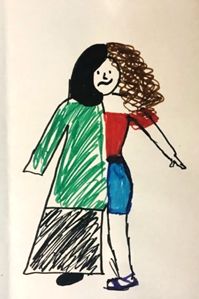Education – Girls 0 – 12 years:

Access to education was a major problem for all children and in particular for girls. Where family resources are limited often girls will be withdrawn from schools to assist with household chores while women go out to seek work.
Participants also reported incidents of sexual abuse of young girls in the schools and on the way to school.
Education – Girls 13 – 17 years:
education is more important for boys than girls. So if our family can afford only one child to send to school, then they will obviously send the boys [rather] than to send the girls
Refugee Woman, 2019
We want them to go to school, but salary is not enough to pay the fees
Refugee Woman, 2019
This group faces similar problems to those of younger girls. Girls in this age group (and even younger, as noted above) are often required to care for younger siblings and/or family members with a disability while their parents work, so cannot attend school. Lack of educational opportunities denies girls the protection this affords and contributes to early marriage and a cycle of disadvantage and violence for young mothers and their children. It leads to low self-esteem, loss of hope for the future, working in dangerous illegal jobs, and vulnerability to SGBV. It also fosters a loss of trust in adults in their community and of NGO service providers, who they see as often powerless to assist them.
Girls miss opportunities for secondary education and vocational training because they are afraid of being sexually abused
Refugee Woman, 2019
Education – Women 18 – 24 years:
Concerns were expressed that women and girls’ lower access to education further entrenches gender inequality. This restricts opportunities to make decisions in their own lives and to take leadership roles in their communities. Lack of education is a contributing factor to early marriage and its consequences; and in a vicious cycle, early marriage also prevents girls from completing their education.
For these women, there is lack of any higher education opportunity.
Refugee Woman, 2019
Education – Women 25 – 50 years:
By the time women reach 25, there is no opportunity for further education, nor remedial education to make up for lost opportunities. This ties women who have not had an adequate education to either home duties or illegal and dangerous work. It increases their vulnerability to SGBV and severely limits the possibility for leadership opportunities, participation and decision making. Participation in training offered is usually not available to these women.
Women identified that the English language is the most important thing for them to get jobs or to have a future, but they don’t have this opportunity. They reported that the available educational centres are of very poor quality.
Education – Older Women:
It is generally considered that older women are not able to learn, and there are no education services to assist them. Women who are preliterate are not able to access written information. This increases their dependence on family and marginalisation and isolation from the wider community.
As most of these women are illiterate, they need special centres to help them but there is no such chance.
Refugee Woman, 2019
Education – LBTI Women:
Unless women in this group are willing and able to hide their sexuality, the discrimination and violence they experience in all areas of their lives will also exclude them from accessing education and the multiple benefits and protection this can bring. Women reported that known LBTI girls are stigmatised and shamed at school, which often leads to them dropping out of school.
Education – Women with disability:
There are few specialist services available to women and girls.
Education – Single women/mothers:
As noted above, single women (in particular single mothers) face extreme difficulties in procuring sufficient food and other basics for survival. They have neither resources nor time to access education, and most often are unable to raise the fees for their children to attend school.